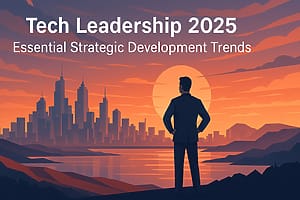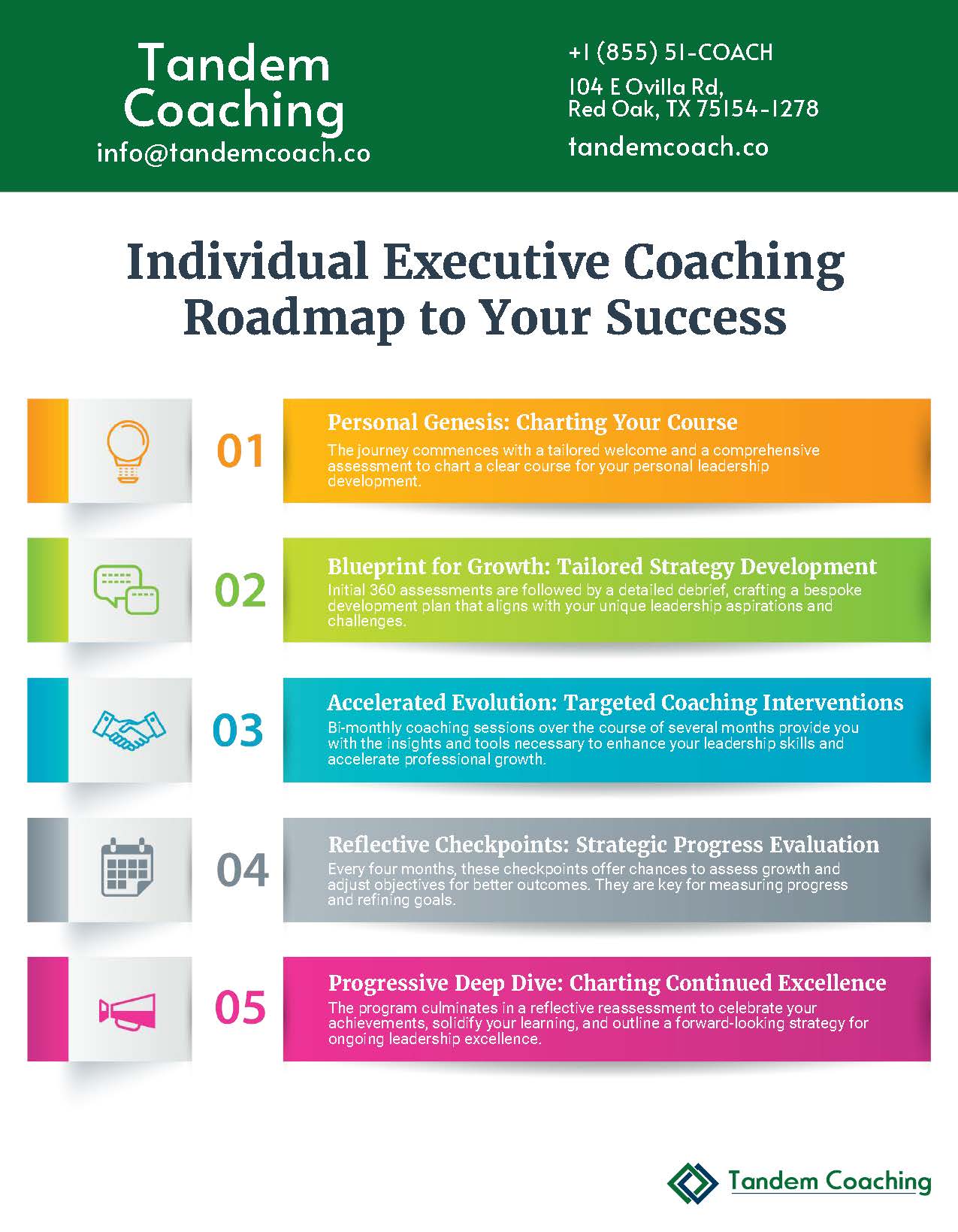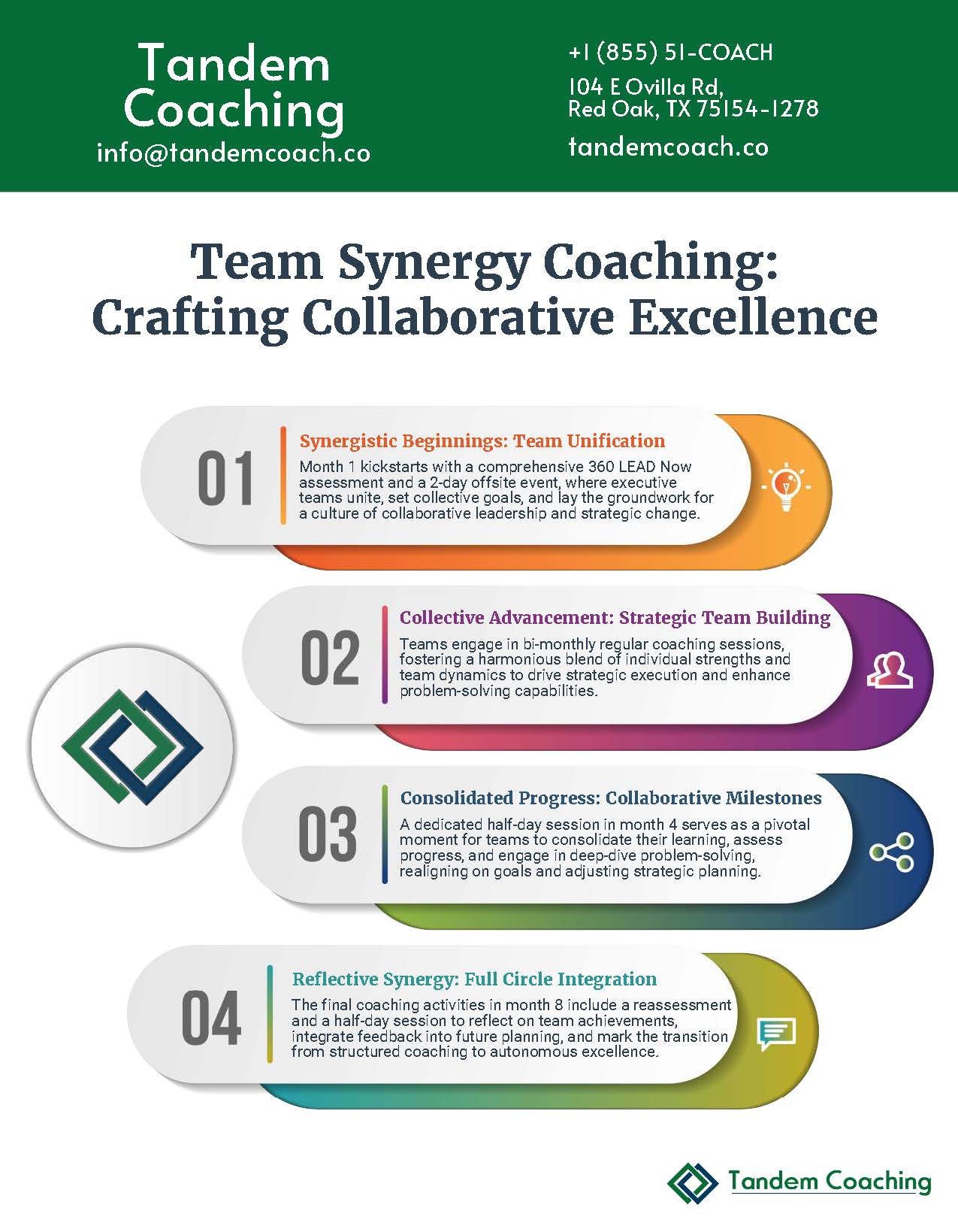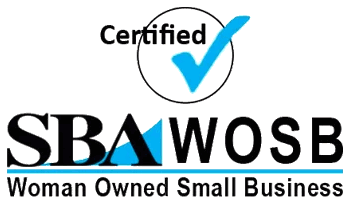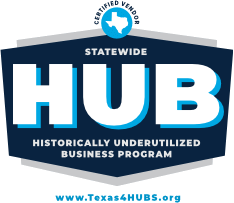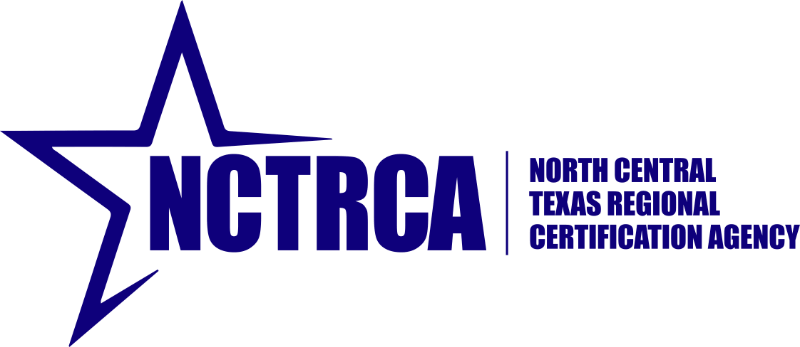Here’s what David Allen couldn’t have known when he wrote Getting Things Done: Executive work doesn’t fit into next actions. When your ‘next action’ is ‘determine three-year product strategy while managing seventeen parallel crises and preparing for Tuesday’s board meeting,’ the system breaks. You know this because you’ve tried—maybe even succeeded with GTD in a previous role. But at this level? Different game, different rules.
You’re not alone in this frustration. A longitudinal study from the University of California, Berkeley found that while 82% of knowledge workers successfully implement GTD principles, only 23% of senior executives maintain the system beyond three months. The failure isn’t personal—it’s architectural. GTD was designed for individual productivity, not for leaders whose effectiveness multiplies through others.
The baseline from your audit likely revealed the truth: you’re juggling 200+ open loops across multiple time horizons, managing stakeholder complexity that would break traditional systems. Standard GTD treats a board presentation and a expense report approval with equal weight. At your level, that’s not just inefficient—it’s organizationally destructive.
Why Standard GTD Fails at Executive Scale
What I’ve discovered after working with hundreds of executives is that GTD breaks down at precisely five failure points when applied to leadership roles. Understanding these failures is crucial before we rebuild the system for your reality.
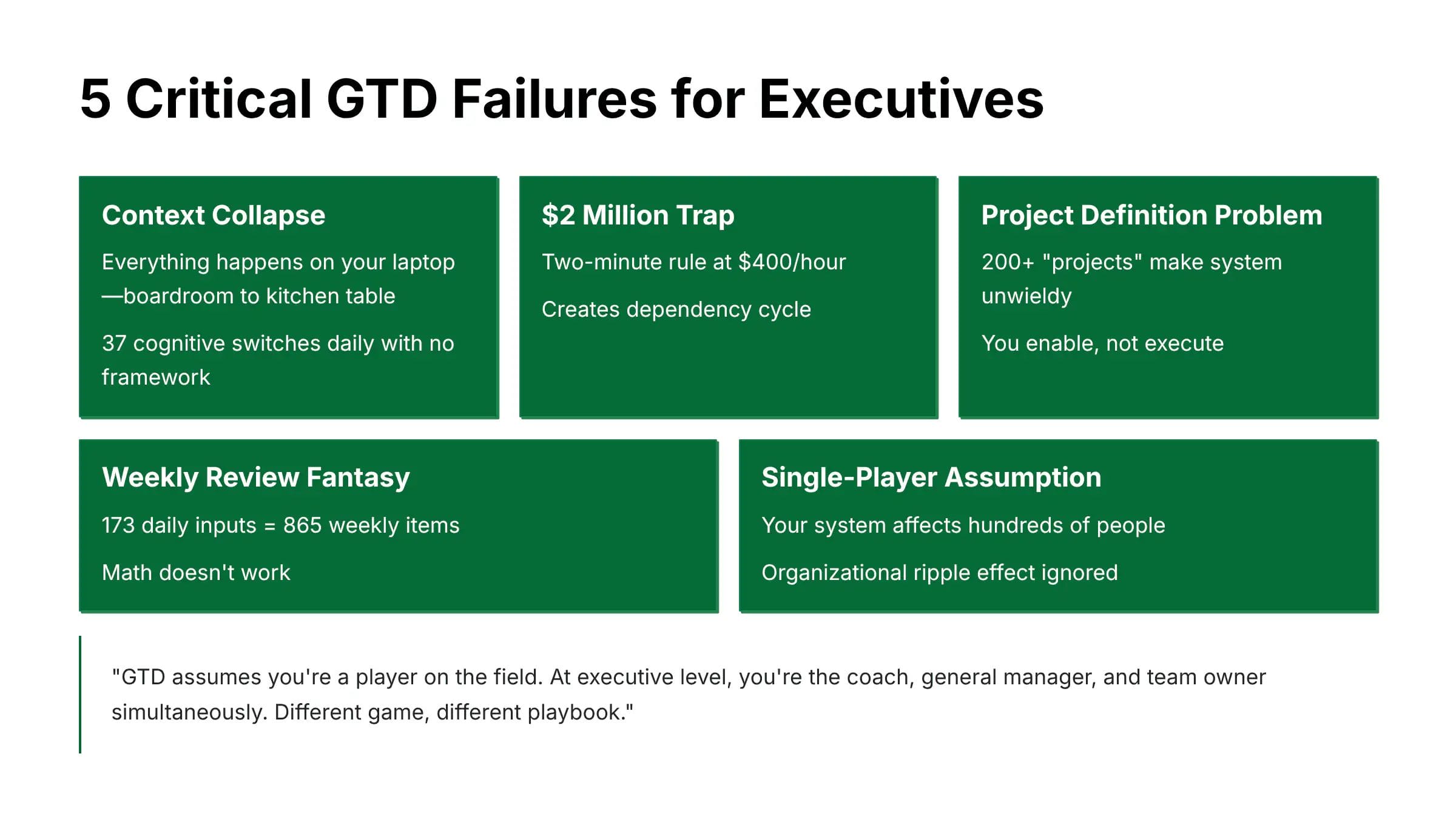
First, the context collapse. David Allen’s suggested contexts—@computer, @phone, @office—assume distinct physical locations and tools. Today, everything happens on your laptop, whether you’re in the boardroom, on a plane, or at your kitchen table at 10 PM reviewing tomorrow’s presentation. More critically, these contexts don’t capture cognitive requirements. A study by McKinsey Global Institute found that executives switch between analytical, creative, and interpersonal thinking modes 37 times per day, yet traditional GTD provides no framework for managing these cognitive contexts.
Second, the two-minute rule becomes a two-million dollar trap. When your hourly value to the organization exceeds $400 (the median for VP-level and above), those “quick” two-minute tasks aren’t quick—they’re expensive. Worse, each task you handle personally that could be delegated sends a message: I don’t trust my team. This creates a vicious cycle where more decisions flow to you because you’ve trained your organization to seek your input on everything.
Third, the project definition problem. In GTD, a project is any outcome requiring more than one action. For an executive, this definition is useless. You might have 200+ projects by this definition, making the system unwieldy. Moreover, most of your “projects” aren’t things you’ll complete—they’re outcomes you’ll ensure through others. “Improve customer retention by 15%” isn’t a project you execute; it’s a strategic objective you enable.
“GTD assumes you’re a player on the field. At executive level, you’re the coach, general manager, and team owner simultaneously. Different game, different playbook.”
Fourth, the weekly review fantasy. Allen prescribes a comprehensive weekly review taking 1-2 hours. Research from Harvard Business Review shows the average executive faces 173 new inputs daily that require some form of decision or response. By week’s end, you’re looking at 865 items to process, clarify, and organize. The math doesn’t work. Either the review becomes a superficial scan that misses critical items, or it expands to consume an entire day.
Fifth, the single-player assumption. GTD is fundamentally a personal productivity system. It doesn’t account for the fact that your productivity system affects dozens or hundreds of people. When you change how you process information, your entire organization needs to adapt. This ripple effect isn’t addressed in traditional GTD.
The Executive GTD Framework: Architecture for Leadership
The solution isn’t to abandon GTD but to rebuild it for executive reality. This framework maintains Allen’s core insights—the power of capture, the clarity of next actions, the peace of trusted systems—while adapting them to leadership complexity. Think of this as GTD 2.0, architected for your complete productivity system.
Let me share how Jennifer, CFO of a $2B healthcare company, transformed her effectiveness with these modifications. She went from 60-hour weeks of reactive firefighting to 45-hour weeks of strategic leadership, while her team’s engagement scores improved by 31%. The key wasn’t working harder—it was building a system that acknowledged her actual role.
Modification One: Cognitive Contexts Replace Physical Contexts
Instead of @computer or @phone, organize by cognitive mode:
Strategic Synthesis (vision, planning, innovation)
Stakeholder Navigation (board, investors, key customers)
Team Catalysis (coaching, feedback, culture)
Operational Orchestration (decisions, unblocking, reviews)
Crisis Command (urgent issues requiring executive authority)
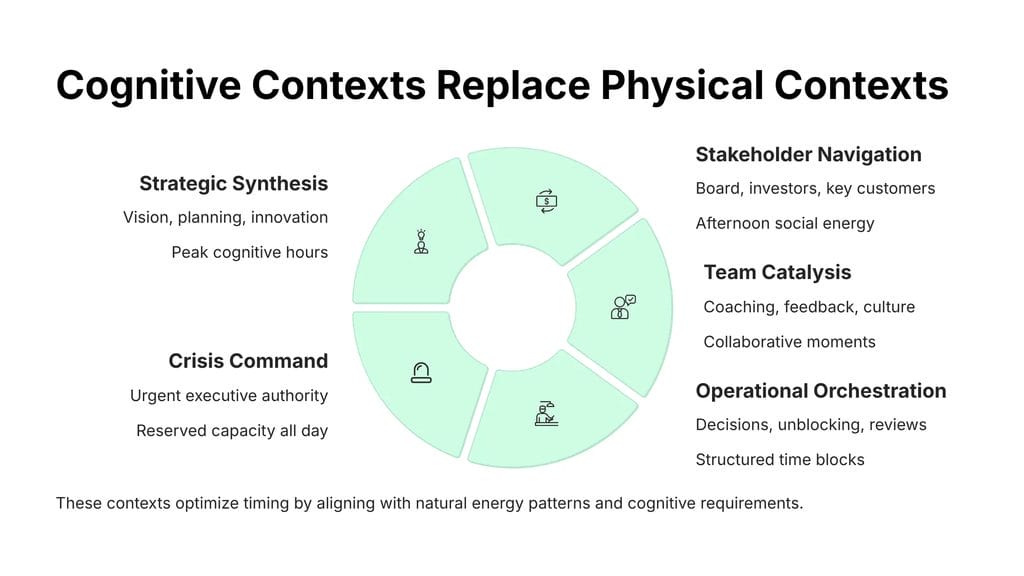
These contexts optimize timing for GTD activities by aligning with your natural energy patterns. Strategic Synthesis happens during peak cognitive hours. Stakeholder Navigation might align with afternoon social energy. Crisis Command requires reserved capacity throughout the day.
Modification Two: Intelligent Capture Protocols
Your capture system needs filters, not just collection points. According to research by Dr. Tom Davenport in Harvard Business Review, executives who implement tiered capture systems reduce processing time by 43% while improving decision quality.
Create three capture tiers:
Tier 1: Direct executive attention required (board, crisis, strategic decisions)
Tier 2: Delegation candidates with oversight (team can handle with guidance)
Tier 3: FYI or optional (updates, reports, general information)
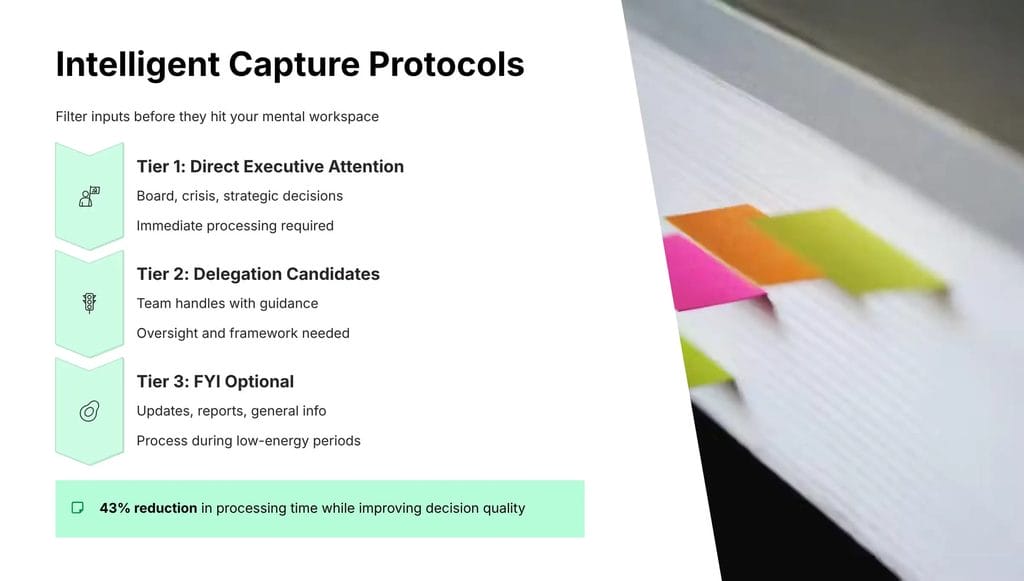
This tiered approach reduces cognitive load by preventing everything from hitting your mental workspace simultaneously. Your assistant or chief of staff can pre-filter into these tiers, allowing you to process in priority order during dedicated time blocks.
Modification Three: The Delegation-First Clarifying Process
Traditional GTD asks “What’s the next action?” Executive GTD asks “Who should own this?” before determining any action. This fundamental shift transforms clarifying from a personal productivity exercise into an organizational effectiveness practice.
When clarifying, ask in this order:
Why is this coming to me specifically?
Who could handle this with proper authority?
What framework would prevent this from coming to me again?
If I must handle it, what’s the minimum viable involvement?
What’s the true next action that only I can take?
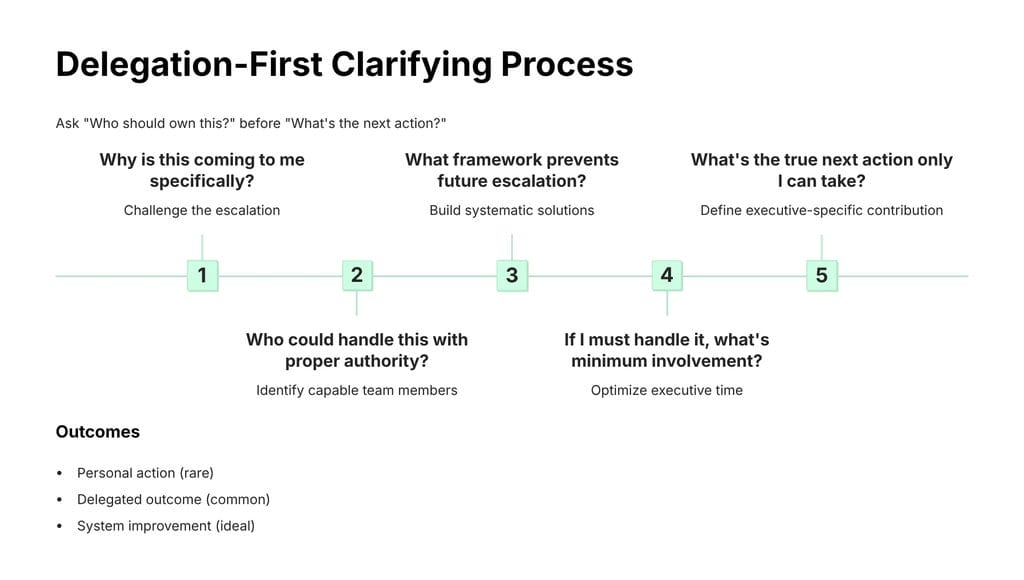
This approach prepares you for systematic delegation while building organizational capability. Every item you clarify becomes either a personal action (rare), a delegated outcome (common), or a system improvement (ideal).
Building Your Multi-Stream Capture System
The average executive receives inputs through at least seven channels: email (127 daily), messages (74 daily), meetings (23 hours weekly), documents (14 daily), verbal requests (31 daily), phone calls (11 daily), and internal thoughts (countless). Standard GTD’s “ubiquitous capture” becomes overwhelming at this scale. You need intelligent capture architecture.
Start with email, which despite predictions of its demise, remains the primary executive communication channel. A study by the Radicati Group found that executives spend 28% of their workweek on email, yet only 14% of these emails require executive action. The solution isn’t better email management—it’s email bypass for non-executive decisions.
Marcus, a VP of Engineering at a fintech company, implemented a three-fold email strategy that recovered 7 hours weekly. First, his assistant pre-processed using simple rules: board members (immediate), direct reports (daily batch), everyone else (weekly summary). Second, he created template responses for common requests that his assistant could send on his behalf. Third, he established “office hours” for email responses, training senders to expect batch processing rather than immediate replies.
For messaging platforms—Slack, Teams, or whatever your organization uses—the challenge is their synchronous expectation. These platforms can destroy executive productivity by creating an always-on expectation. The solution: scheduled batch processing with clear expectations. Check messages at defined times (perhaps 9 AM, 1 PM, 5 PM) with emergency keywords that trigger immediate notification (e.g., “URGENT-EXEC” or “BOARD-CRITICAL”).
“Every input channel without a protocol is a productivity leak. Every protocol without team alignment is a source of frustration.”
Meeting inputs require special handling because they generate the richest information yet are most poorly captured. MIT Sloan research shows that only 23% of meeting decisions are documented, and only 14% of action items are tracked to completion. For executives, these percentages are even worse because you’re often moving between back-to-back meetings without processing time.
The solution: implement a “meeting capture protocol” where every meeting produces three outputs—decisions made, actions assigned (with owners), and issues for escalation. This can be as simple as a shared document template or as sophisticated as an AI meeting assistant. The key is consistency and delegation—you shouldn’t be taking or processing these notes yourself.
The Strategic Project Portfolio: Outcomes Not Tasks
In executive GTD, your project list transforms from a task inventory into a strategic portfolio. This shift—from doing to ensuring—fundamentally changes how you organize and review projects. Your project list becomes a dashboard of organizational outcomes you’re accountable for, not a catalog of personal tasks.
Consider how Michael, CEO of a 500-person software company, restructured his project view. Instead of tracking 147 “projects” by traditional GTD definition, he organized into four portfolios:
Board Accountabilities: Metrics and initiatives directly tied to board reporting Strategic Bets: Long-term initiatives that could transform the business Operational Excellence: Continuous improvements to core operations Leadership Development: Growing organizational capability
Each portfolio contains 5-10 major initiatives, each with an executive owner (rarely Michael), success metrics, and review rhythm. This structure provides strategic oversight without operational overwhelm. It also naturally feeds into board reporting, strategic planning, and performance reviews.
This portfolio approach serves as the foundation for building your second brain, where you’ll capture not just tasks but institutional knowledge, decision rationales, and strategic insights that compound over time.
The Executive Weekly Review: Strategic Command Center
The traditional weekly review—get clear, get current, get creative—needs executive augmentation. Research from the Stanford Graduate School of Business shows that executives who conduct structured weekly strategic reviews are 34% more likely to achieve their quarterly objectives. But this isn’t about perfect task management—it’s about strategic navigation.
Your executive weekly review serves five functions:
Portfolio Performance: Are your strategic initiatives on track? What’s at risk? What needs intervention? This isn’t about task completion but momentum and trajectory.
Stakeholder Pulse: What are your key stakeholders thinking, feeling, needing? Board members, investors, key customers, crucial team members. This social radar often reveals issues before they become crises.
Decision Inventory: What decisions are pending? What information do you need? Who’s waiting on your input? According to research by Bain & Company, delayed executive decisions cost organizations an average of $1.2M annually in lost opportunity and team idle time.
Energy Alignment: Does your calendar for the coming week align with your energy patterns? Are you doing strategic thinking during peak hours or wasting them in status meetings?
System Evolution: What broke this week? What patterns emerged? How can you prevent these issues from recurring? Every weekly review should produce at least one system improvement.
Sarah, the healthcare CFO mentioned earlier, schedules her weekly review for Thursday mornings when her strategic thinking peaks. She processes through a consistent template that takes exactly 90 minutes, producing a one-page strategic brief she shares with her leadership team. This transparency cascades strategic clarity throughout her organization.
Making GTD Organizational: Team Integration Protocols
Your personal productivity system creates organizational ripple effects. When you implement executive GTD effectively, it becomes a force multiplier for your entire team. But this requires intentional integration, not just personal implementation.
The first step is transparency about your system. Your direct reports need to understand how you process information, when you make decisions, and what triggers immediate attention versus batch processing. This isn’t micromanagement—it’s interface design. You’re creating clear APIs between your system and theirs.
Create explicit protocols for common interactions:
Decision requests must include context, options, and recommendation
Status updates follow a consistent format (dashboard, not narrative)
Escalations require evidence of attempted resolution
Meeting requests must pass the “why executive?” test
These protocols train your organization to think more strategically while reducing your processing burden. They also prepare your team for the 30-day implementation of their own productivity systems, creating organizational momentum.
From Theory to Practice: Your 30-Day Implementation Path
Implementing executive GTD isn’t a weekend project—it’s a progressive transformation. But you can see meaningful results within days if you sequence correctly.
Week 1: Foundation Start with single-point capture. Don’t try to process or organize—just capture everything for one week. This immediately reduces cognitive load and reveals your true input volume. By week’s end, you’ll have data on what actually flows to you versus what should.
Week 2: Structure Implement cognitive contexts and begin sorting your captured items. Don’t worry about perfection—you’re building the framework. Begin daily processing sessions (15 minutes morning, 15 minutes evening) to prevent backlog.
Week 3: Delegation Start applying the delegation-first clarifying process. This will feel uncomfortable initially—you’re rewiring years of “I’ll just do it myself” conditioning. Track what you delegate and to whom. You’re building organizational capability, not just clearing your plate.
Week 4: Integration Conduct your first executive weekly review and share the output with your team. Implement communication protocols. Begin training your organization on how to interface with your system. This is where leverage begins multiplying.
“The goal isn’t a perfect system—it’s a functional system that evolves. Start simple, stay consistent, sophisticate gradually.”
Frequently Asked Questions
How do I handle board members who expect immediate responses to everything?
Set explicit expectations during calm periods, not crisis moments. Most board members respect structured communication once they understand it improves decision quality. Offer a “board emergency” protocol for truly urgent items while batch processing everything else. One executive created a weekly “board brief” that preemptively answered 80% of ad-hoc questions.
What if my organization's culture resists structured communication protocols?
Start with your direct reports and demonstrate value through results. When your team sees that structured protocols lead to faster decisions and clearer direction, adoption spreads organically. Frame it as “helping me help you” rather than imposing bureaucracy.
Should I use paper or digital for capture?
Use whatever has the least friction for you. Many executives use hybrid systems—paper for meeting notes and thinking, digital for processing and organizing. The tool matters less than consistency. That said, digital systems enable delegation and sharing more easily.
How do I maintain GTD during crisis periods?
Crisis is exactly when you need systems most. Create a “crisis mode” version of your system—simplified contexts, abbreviated reviews, essential captures only. Think of it as your emergency protocol, not system abandonment.
Can I implement executive GTD if my assistant isn't experienced with productivity systems?
Yes, but you’ll need to invest in training them. Start by having them shadow your weekly review. Share your contexts and criteria. Many executives find that training an assistant in executive GTD transforms them from administrative support into strategic leverage.
How does executive GTD integrate with Agile/Scrum if my organization uses those frameworks?
Executive GTD complements Agile beautifully. Your weekly review aligns with sprint boundaries. Your contexts map to Agile ceremonies. Your project portfolios become epic tracking. The key is translating between frameworks, not replacing one with another.
What's the biggest mistake executives make when implementing GTD?
Trying to maintain individual contributor habits at executive level. The executives who fail with GTD are those who try to personally execute everything rather than orchestrate through others. Remember: your job is enabling outcomes, not completing tasks.
How long before I see meaningful results?
Most executives report immediate relief from capture alone—knowing nothing will be forgotten. Organizational benefits emerge around week 3 as delegation patterns establish. Full transformation typically takes 60-90 days as both you and your organization adapt to new patterns.
Your Next Strategic Move
You’ve completed your productivity audit. You understand where your time goes and where it should go. Now it’s time to build the system that bridges that gap. Executive GTD isn’t just about personal productivity—it’s about organizational leverage.
The path from chaos to control doesn’t require perfection. It requires starting. Tomorrow morning, choose one capture tool and use it all day. By week’s end, you’ll have the raw material to begin building your executive GTD system.
If you’re ready to accelerate this transformation with personalized guidance tailored to your specific role and organization, I invite you to explore our executive coaching programs. We help senior leaders build productivity systems that scale, creating sustainable performance without sacrificing what matters most.
Remember: the executives who thrive aren’t those who do the most—they’re those who enable the most. Your GTD system is the foundation for that enablement. The question isn’t whether you need a better system. It’s whether you’ll build one before the current chaos becomes unsustainable.
The choice, and the next action, is yours.
![Why is Leadership Development Important? [Quick Answer]](https://cdn.tandemcoach.co/wp-content/uploads/2024/08/TC-215.jpg)







